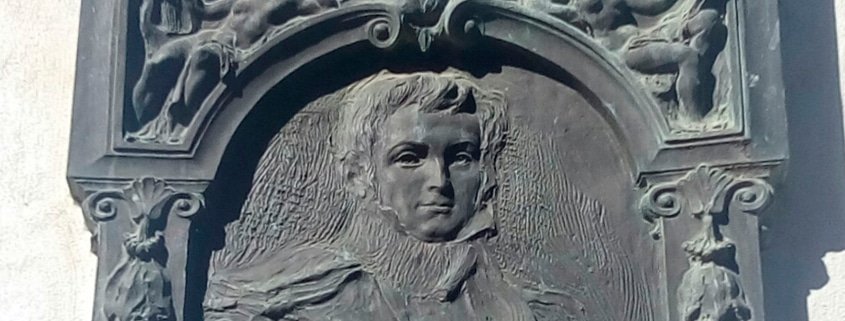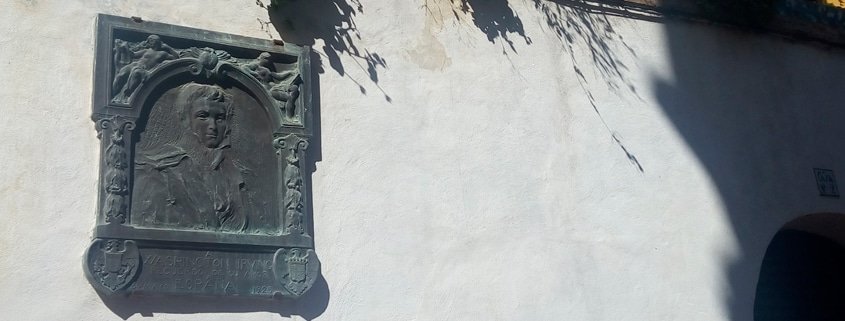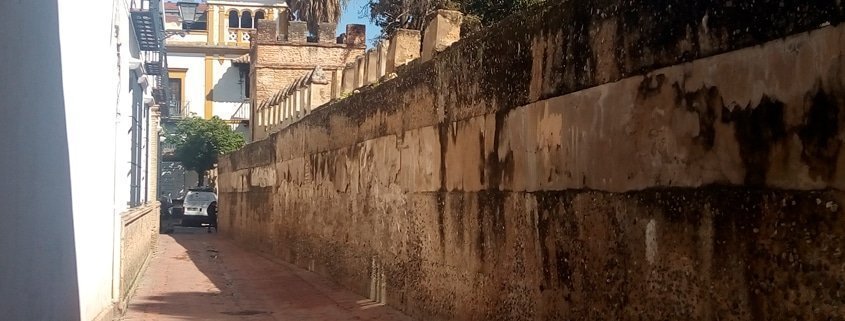Washington Irving: The first tourist in Seville?
Maybe he was not the first but definitely one of them.
In the spring of 1828, Washington Irving arrived at the port of Seville, this happened 190 years ago. He came aboard the Betis, the first steam ship in Spain that traced the Guadalquivir from Cádiz. Irving was born in New York in 1783 and was already a well-known romantic writer and journalist and was also a tireless traveler and ambassador throughout Europe.
WORKS OF IRVING
Among his most famous works known worldwide were: The Legend of Sleepy Hollow, better known as The Legend of the Headless Horseman (adapted to film by Tim Burton in 1999) and Rip Van Winkle, which tells the story of someone who sleeps for dozens of years.
He also wrote: The Life and Voyages of Christopher Columbus (History of the life and trips of Cristóbal Columbus, 1828), Chronicles of the Conquest of Granada (1829), Voyages and Discoveries of the Companions of Columbus (1831). But the most celebrated book about Spain was Cuentos de la Alhambra (Tales of the Alhambra) (1832), where it recasts for the English public the best known Spanish-Arabic legends about the Red Castle. He is also owed some Legends of the Conquest of Spain (1835).
He was the first American to achieve celebrity as a professional writer, thanks to literature, and that is why numerous streets and cities in the United States are named after him. He influenced well-known authors such as Nathaniel Hawthorne and Edgar Allan Poe. Irving also popularized the nickname “Gotham” to refer to New York, used in Batman comics; He is also known as the inventor of the expression “the almighty dollar.” He died in New York in 1859 and is buried in the cemetery of Sleepy Hollow.
WASHINGTON IRVING IN SPAIN
He came first to Madrid called by the ambassador of his country to study in El Escorial the documents related to the discovery of the New World (1826-1829). This assignment marked the beginning of his diplomatic career.
It is shortly after when Washington Irving appears in Seville.
1828 had a bright spring and Washington Irving stayed in a picturesque big house of the Callejon del Agua “alley of the Water”, today house number 2, by the Alcázar wall, in the old
Sevillian Jewish quarter.
In Seville he spent a whole year, as a tourist and as a scholar of the History of Spain and the city. He wrote a diary that has been edited by the Hispanic Society of New York: Diary of
Washington lrving of the Sunnyside Spain, a suggestive name that evokes the sun of Andalucia.
He spent the mornings in the study halls of the Archivo de Indias (Archive of Indies), between bundles and voluminous cartographic documents. Some days he visited the archives of the cathedral and other palaces raised with gold and silver brought from the New World.
His meticulous work ended with the publication, some time later, of the book Vida y viajes by Cristóbal Colón (Life and Journeys of Christopher Columbus). But above all he discovered during his stay in Seville the spirit of the Andalusian heritage, raised centuries before Christians came and entered through the gates of the capital. The enchanted buildings, wrapped in the hazy legend of lost times amazed him.
As a good tourist Irving tries to see everything typical of Sevillian life: the body of San Femando on the day of saint’s festival and on that night the illumination of the city and the Giralda; the dance of the Seises the day of Corpus, the procession, the appearance of the city the night before.
This is what he writes in his diary about the Cathedral that impressed him so much:
“If you ever come to Seville, do not miss visiting its glorious cathedral … visit it at dusk, when the last rays of sun, rather the last shining of the day, shine through its polychrome stainedglass
windows. Visit it at night, when its chapels are poorly illuminated, its immense ships barely illuminated by the rows of silver lamps, and when the mass is prepared on the high altar, between flashes of gold and clouds of incense … I do not believe I have never felt an equal pleasure in any other monument of this kind … It is close to the house where I stayed in Seville and it was my daily resource. In truth, I visited it more than once in the course of the day. A slow wander through that cathedral, especially towards dusk, when the deepest shadows and the light of the polychrome stained glass more confused and vague, produced in me the impression of a walk through one of our great American forests … ” But Irving needed to do one more journey, he wanted to know the last Islamic city of the Iberian Peninsula and his studies took him to Granada, a few days away from the capital of Seville. A year after his arrival, Irving undertook the trip to the city of the Alhambra.
The gardens of the Alhambra has a sculpture dedicated to him.
THE TRAVELERS AND ANDALUCIA
The Council of Europe created years ago the Routes of the Andalusi Legacy, to promote tourism and make known the Andalusian land by focusing on its Arab past and the legacy of that time. Among these, there is a “Washington Irving route” that takes 250 km from Seville to Granada passing through Antequera.
This route goes through the steps followed in 1829 by the American romantic and diplomatic writer, fascinated by the wealth and exoticism of the Hispano-Muslim civilization. An artery of communications established many centuries before, which, in the late Middle Ages, served as a commercial route between the southern Christian peninsular and the Nasrid kingdom of Granada. Route that, like others, had a marked border character.
This route brings to life a second story, that of the romantic, and tourist “discovery” of Andalusia. In tune with the new sensitivity of romanticism, and after the staging of the Iberian Peninsula with the War of Independence, Spain, and Andalusia in particular, began to receive an increasing attention as a travel destination. The visits of Chateaubriand and Lord Byron, who spoke of Andalucia in their works, followed the trips and stays of Washington Irving himself, Richard Ford, Borrow, Delacroix, David Roberts, Gautier, Dumas and especially French Prosper Merimée creator of the mythical story of Carmen, the Cigarrera.
These travelers, French, British or American created a mysterious, romantic and folkloric image of Andalucia. Full of passionate characters, sometimes cruel and in love, perhaps it doesn’t correspond to 100% with the real image, in a panorama of legends, bullfighters and bandits, majas and smugglers but certainly it served to raise awareness of our region outside our borders and to popularize its landscape, history and culture.
To those first “tourists” and “travelers” are dedicated this post.





